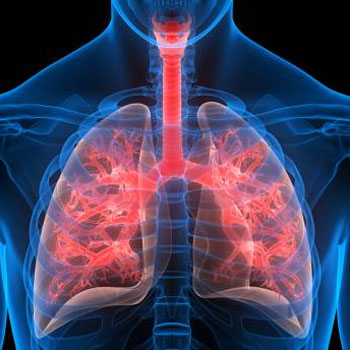Respiratory failure is a critical condition where the respiratory system fails to adequately exchange gases, leading to hypoxemia (low oxygen levels) and/or hypercapnia (high carbon dioxide levels) in the blood. Effective management of respiratory failure is crucial to prevent complications and improve patient outcomes. This article explores the causes, symptoms, diagnosis, and treatment strategies involved in the management of respiratory failure.
What is Respiratory Failure?
Respiratory failure occurs when the lungs are unable to perform sufficient gas exchange to meet the body's metabolic needs. It can be classified into two types
Hypoxemic Respiratory Failure
Characterized by low oxygen levels in the blood (PaO2 < 60 mmHg on room air).
Hypercapnic Respiratory Failure
Marked by high carbon dioxide levels in the blood (PaCO2 > 45 mmHg).
What are the causes of respiratory failure?
Respiratory failure can arise from various conditions affecting the lungs, airways, chest wall, or central respiratory centers. Common causes include
- Chronic Obstructive Pulmonary Disease (COPD): Emphysema and chronic bronchitis can lead to progressive respiratory insufficiency.
- Pneumonia: Inflammation and infection of the lung tissue impair gas exchange.
- Acute Respiratory Distress Syndrome (ARDS): Severe inflammation and fluid buildup in the lungs impair oxygen uptake.
- Neuromuscular Disorders: Conditions such as Guillain-Barré syndrome or muscular dystrophy affect respiratory muscle function.
- Thoracic Trauma: Injuries to the chest wall or diaphragm can compromise respiratory mechanics.
Symptoms of Respiratory Failure
Patients with respiratory failure may experience
- Shortness of breath (dyspnea)
- Rapid breathing (tachypnea)
- Cyanosis (blue discoloration of the skin and mucous membranes)
- Confusion or altered mental status (in severe cases)
Diagnosis
Diagnosing respiratory failure involves a combination of clinical assessment, blood gas analysis, imaging studies, and pulmonary function tests. Key diagnostic tests include
- Arterial Blood Gas (ABG) Analysis: Measures oxygen and carbon dioxide levels in the blood
- Chest X-ray or CT Scan: Identifies lung abnormalities such as consolidation, infiltrates, or pneumothorax
- Pulmonary Function Tests: Assess lung function and capacity
Management of Respiratory Failure
Effective management of respiratory failure focuses on improving oxygenation, reducing carbon dioxide levels, and treating the underlying cause. Treatment strategies include
Oxygen Therapy
Supplemental oxygen is administered to correct hypoxemia and improve tissue oxygenation. Methods include nasal cannula, face mask, or non-invasive ventilation (NIV) for severe cases.
Mechanical Ventilation
Invasive mechanical ventilation may be necessary for patients with severe respiratory failure who fail to respond to non-invasive measures. Ventilators assist with breathing and support respiratory function
Bronchodilators and Corticosteroids
Medications like bronchodilators (e.g., albuterol) and corticosteroids (e.g., prednisone) are used to reduce airway inflammation and improve lung function in conditions like COPD or asthma exacerbations
Antibiotics
In cases of bacterial pneumonia or exacerbations of chronic lung disease, antibiotics are prescribed to treat underlying infections.
Nutritional Support
Adequate nutrition is essential for patients with respiratory failure to support energy expenditure and facilitate recovery
Monitoring and Supportive Care
Continuous monitoring of oxygen saturation, respiratory rate, and blood gases helps guide treatment adjustments. Supportive care includes maintaining adequate hydration and preventing complications like pressure ulcers or venous thromboembolism.
Prognosis
The prognosis of respiratory failure depends on the underlying cause, the patient's overall health, and the promptness of intervention. With timely and appropriate management, many patients recover fully or experience significant improvement in symptoms and lung function.
Respiratory failure is a serious condition that requires prompt recognition and intervention. Effective management involves addressing both the underlying cause and the physiological consequences of impaired gas exchange. Through a combination of oxygen therapy, mechanical ventilation when necessary, and targeted pharmacological interventions, healthcare providers can optimize patient outcomes and reduce mortality associated with respiratory failure.
By understanding the causes, symptoms, diagnosis, and treatment options for respiratory failure, healthcare professionals can deliver comprehensive care tailored to each patient's needs. Continued research and advancements in respiratory care contribute to improving outcomes and quality of life for individuals affected by this challenging condition.

